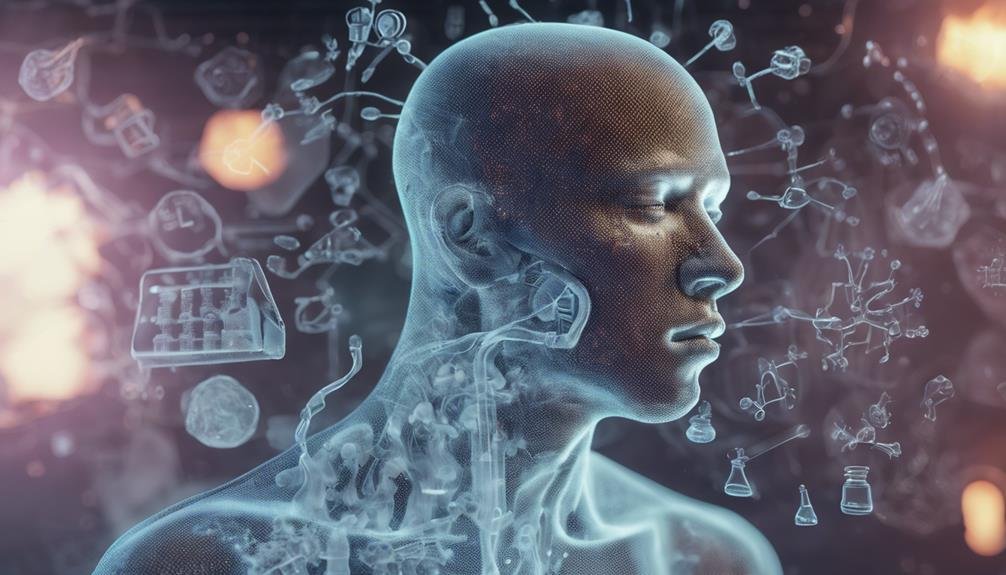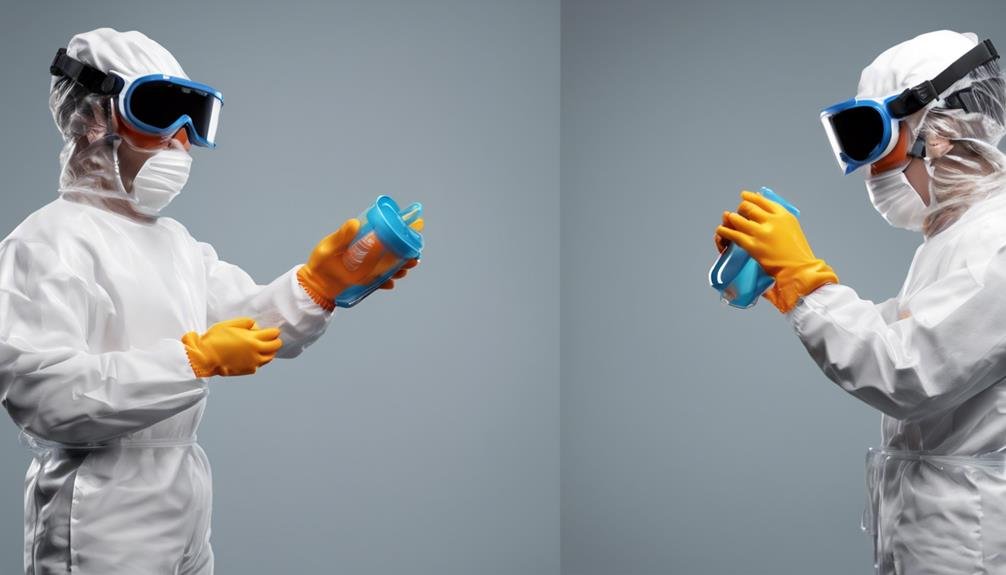You're likely wondering if PLA, a popular 3D printing material, poses toxic risks to humans. PLA itself is non-toxic, but additives or dyes in some PLA filaments may pose potential toxicity risks. When 3D printing with PLA, inhaling ultrafine particles and volatile organic compounds can lead to respiratory risks, although the risks are lower compared to ABS fumes. To minimize exposure, take precautions like using ventilation systems, air purifiers, and proper sanitation practices. By being aware of these potential risks, you can safely work with PLA and investigate its many applications in 3D printing, and there's more to learn about its benefits and safe handling.
What Is PLA Made Of?
You might be wondering what PLA is made of, and the answer lies in renewable resources like corn starch or sugarcane. These natural resources are fermented to produce lactic acid, which is then polymerized into Polylactic Acid, or PLA.
This biodegradable and compostable material is considered groundbreaking, making it an attractive alternative to traditional plastics. As a non-toxic material, PLA is commonly used in food packaging, ensuring that your food is safe from harmful chemicals. Its non-toxic nature also makes it an ideal material for 3D printing applications.
When used in food packaging, PLA provides a sustainable and eco-friendly solution, reducing our reliance on fossil fuels and minimizing waste. With its natural origin and biodegradable properties, PLA is a step in the right direction towards a more sustainable future.
Is PLA Toxic to Humans?
When handling and working with PLA, it's important to evaluate whether this promoted eco-friendly material poses any toxic risks to humans. While PLA itself is non-toxic, being derived from renewable sources like corn starch, there are still concerns about health risks from inhaling PLA fumes during 3D printing. Recent studies show the release of microparticles and COVs during printing, which can pose respiratory risks to humans.
| PLA Filament | Safety Concerns |
|---|---|
| PLA itself | Non-toxic |
| Additives or dyes | Potential toxicity risks |
| Inhaling UFPs and VOCs | Respiratory risks |
| Comparing to ABS fumes | Lower risks |
To guarantee a safe 3D printing experience, it's important to maintain good air quality and minimize exposure to toxic particles. You should take precautions to minimize inhalation of PLA fumes, especially if you have pre-existing respiratory issues. Additionally, be cautious when using PLA filaments with additives or dyes, as they may pose potential toxicity risks. By being aware of these safety concerns, you can enjoy a safe and healthy 3D printing experience.
Health Risks of Inhaling PLA

During the 3D printing process, microparticles and volatile organic compounds (VOCs) are released into the air, posing potential health risks to those inhaling them.
You might be wondering, what exactly does this mean for your health?
Well, the release of ultrafine particles (UFPs) and VOCs during PLA printing can lead to respiratory risks. While PLA filament itself is non-toxic, additives or dyes in some PLA filaments can pose toxicity risks.
Here are three key points to keep in mind:
- Respiratory Risks: Inhaling PLA fumes can lead to respiratory issues, similar to those experienced when inhaling ABS fumes, although to a lesser extent.
- VOCs and UFPs: The release of VOCs and UFPs during printing can cause health issues, especially for those with pre-existing respiratory conditions.
- Toxicity Risks: Some PLA filaments contain additives or dyes that can increase toxicity risks when inhaled, making it crucial to choose high-quality filaments.
It's vital to be aware of these health risks and take necessary precautions to minimize your exposure to PLA fumes during 3D printing.
Reducing Exposure to PLA Fumes
To greatly reduce your exposure to potentially harmful PLA fumes, it is important to implement effective safety measures and ventilation systems in your 3D printing environment. As PLA is biodegradable, it's vital to prioritize health concerns and mitigate the risks of PLA inhalation. One effective way to do this is by using air purifiers equipped with carbon filters, which can efficiently remove toxic particles from the air.
| Safety Measure | Description |
|---|---|
| Enclosure with HEPA filter | Effectively removes 99.97% of particles as small as 0.3 microns |
| VOC sensor | Monitors air quality and provides real-time data on fume levels |
| Respirator and safety glasses | Minimizes inhalation risks and protects eyes from debris |
| Air purifier with carbon filter | Removes toxic particles and odors from the air |
| Education and training | Educates users on the importance of safety measures and precautions |
Safe Handling of PLA Products

You should handle PLA products with care, as improper handling can lead to contamination and potential toxicity risks from additives or dyes in some PLA products. While PLA itself is non-toxic and safe for food contact, additives or dyes in some products may pose risks. To guarantee food safety, it's crucial to follow proper sanitation practices when handling PLA products.
Here are three critical steps to follow for safe handling of PLA products:
- Wash your hands: Before and after handling PLA products, wash your hands thoroughly with soap and water to prevent contamination.
- Use clean equipment: Ensure all equipment and surfaces coming into contact with PLA products are clean and sanitized to prevent cross-contamination.
- Store properly: Store PLA products in a clean, dry environment, away from direct sunlight and moisture to prevent degradation and contamination.
Frequently Asked Questions
Is PLA Safe to Eat off Of?
When eating off PLA plates, you'll be safe as long as you handle them properly, following proper food handling practices in the kitchen, and choose FDA-approved PLA tableware that's specifically designed for meal prep and dining safety.
Is PLA Safe for Health?
You should be aware that PLA is generally considered safe for your health, but you still need to take into account biodegradation effects, environmental concerns, and potential human toxicity, medical risks, neural damage, and respiratory issues that may arise from improper use.
Is PLA Safe to Drink Out Of?
When you drink from PLA bottles, you don't have to worry about daily exposure to toxins; PLA is safe for food contact, ensuring your water quality remains unaffected, making it a reliable container for liquid storage.
What Are the Hazards of PLA Plastic?
When working with PLA plastic, you should be aware of hazards like environmental impact from microplastic formation, manufacturing risks, biodegradability concerns, chemical leaching, and thermal instability, which can impact its general safety and performance.
Conclusion
As you work with PLA, remember to prioritize your health and safety. While PLA is generally considered non-toxic, the fumes it emits during printing can still cause respiratory issues.
Take necessary precautions, such as ventilating your workspace and wearing a mask, to minimize exposure. By following proper handling and safety guidelines, you can enjoy the benefits of 3D printing with PLA while protecting your well-being.